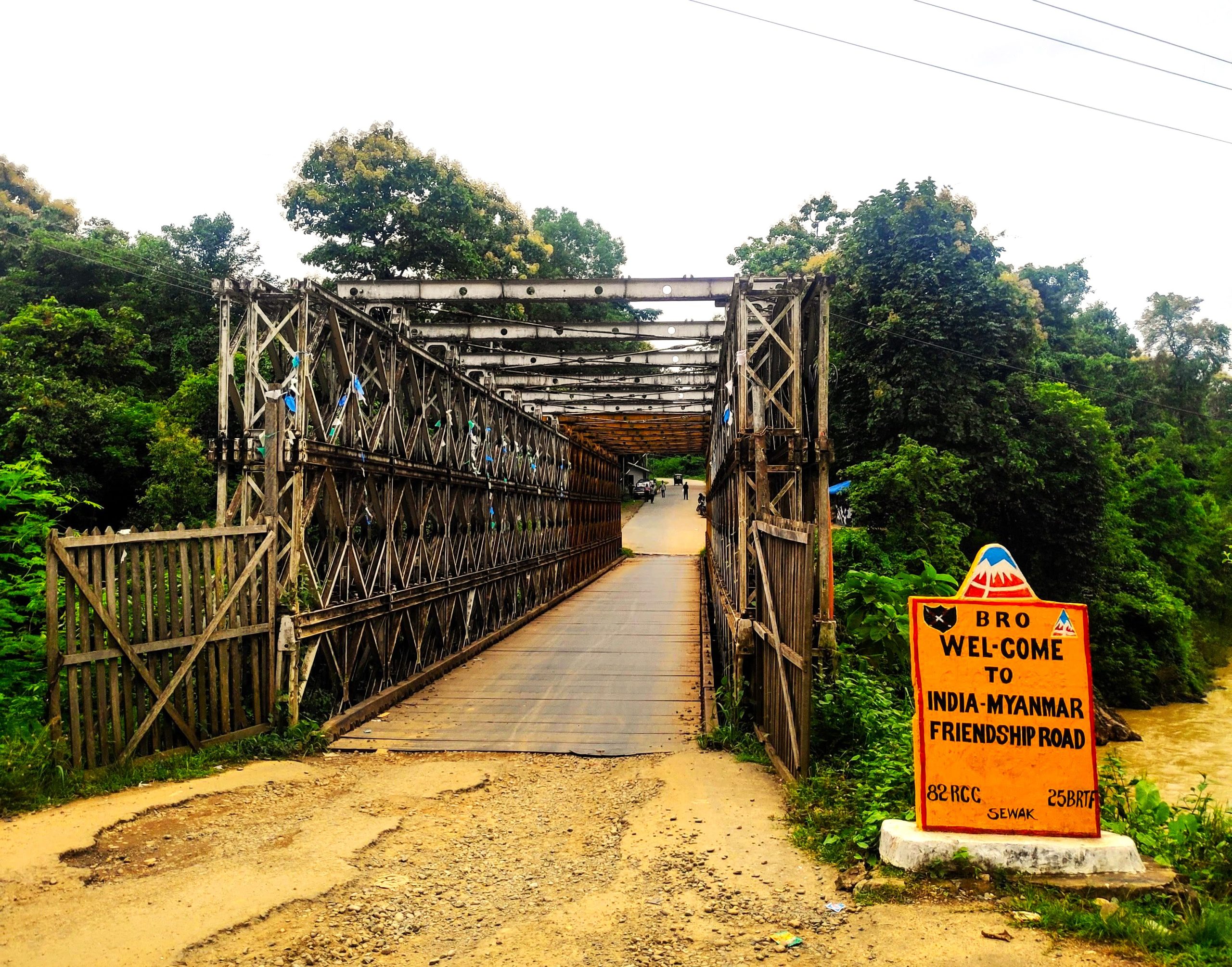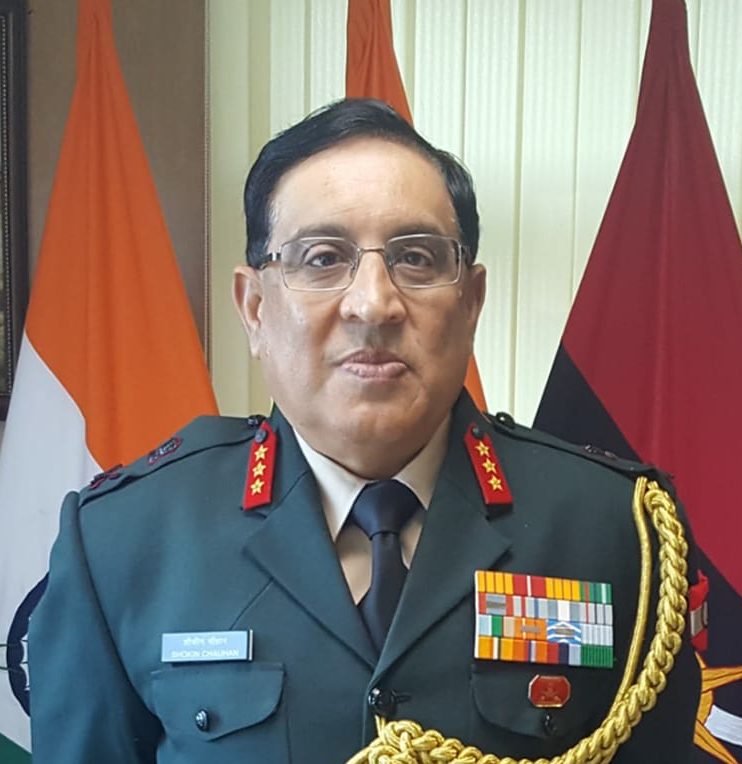
ZOMI IDENTITY AND NATIONHOOD

The Northeastern region of India and Myanmar is a mosaic of diverse ethnic groups, each with its own distinct identity, language, and cultural practices. The intricate tapestry of these communities is woven with threads of history, migration, and adaptation to the rugged and varied landscape. The region’s topography, characterised by dense forests, rolling hills, and swift rivers, has played a significant role in shaping the boundaries and interactions among these groups.
Ethnic boundaries in this region are not merely lines on a map but are deeply rooted in the social and cultural fabric of the communities. These boundaries are often fluid, influenced by inter-ethnic marriages, trade, and conflicts.
The Naga, Mizo, Kuki, Meitei, and various other tribes have established their territories over centuries, each carving out a space that reflects their unique way of life. These territories are marked by distinct linguistic and cultural patterns that have been preserved despite external influences and internal changes.
The Naga tribes, for instance, are spread across the Indian states of Nagaland, Manipur, Arunachal Pradesh, and Assam, as well as parts of Myanmar. Their villages are traditionally autonomous, governed by customary laws and practices. The Naga identity is a complex interplay of various sub-tribes, each with its own dialect and traditions. Yet, there is a shared sense of belonging that transcends these differences, reinforced by common historical experiences and struggles for political recognition.
Recently Savio Fernandes of the Goa Chronicle reported that the Mizoram Chief Minister PU Lalduhoma had given a speech in Indianapolis, United States of America, on September 2, 2024, and later on September 4, 2024, in a question-and-answer session, advocated for the cultural union of the Chin-Kuki-Zo people throughout India, Myanmar, and Bangladesh. In an effort to communicate a wish to transcend the national borders that currently separate them, he emphasised the cultural and religious legacy that they share. “We are one people—brothers and sisters—and we cannot afford to be divided,” Lalduhoma articulated in his statement. We are going to rise up under one leadership in order to accomplish our destiny of nationhood, and this will be accomplished by the power of God, who is the one who made us a nation. On September 2, 2024, CM Lalduhoma had specifically advocated for a unified homeland for the Chin-Kuki-Zo people within the Indian Union, which would encompass the Chin Zo people from India, Myanmar, and Bangladesh.
The region of Northeast India has been home to a diverse range of ethnic groups and complex power dynamics among its different people. Inter-ethnic disputes are common in this region since it is home to a large number of various ethnic groups, each of which has its own distinct identity. Calls for a unified homeland for the Chin-Kuki-Zo people have the potential to upset this delicate equilibrium, which may give rise to worries among neighbouring communities. These communities may view such aspirations as a threat to their territorial integrity.
The states that are located in Northeast India, particularly Manipur and Mizoram, have considerable cultural and ethnic linkages with the regions of Myanmar that are located on the border. On the other hand, the porous and frequently unattended borders have also been a source of long-standing problems, such as migration across borders, insurrection, and trafficking.
In this environment, calling for a single homeland could unwittingly create tensions not only between Mizoram and Manipur but also across India-Myanmar relations, which would adversely affect national security.
The origin of the Chin-Zo people is rooted in the broader Tibeto-Burman ethnic group, which is thought to have migrated from Central Asia into the hills and valleys of Northeast India, Myanmar, and parts of Bangladesh over a thousand years ago. The Chin-Zo, also referred to as Chin-Kuki-Mizo in different regions, form a collection of ethnic communities with shared ancestry, linguistic ties, and cultural practices. Their historical trajectory and current geographical distribution reflect their movement through the region’s challenging terrain and encounters with other communities. Although they share a strong cultural and ethnic identity, they were never a united political nation in the traditional sense. They speak dialects that are often mutually intelligible within regions, though distinct across borders, and are part of a larger cluster of languages spoken by tribes in the mountainous areas of this region. Linguistically, the Zo people, encompassing the Chins, Kukis, and Mizo’s, speak a group of languages and dialects within the Tibeto-Burman family, highlighting a shared origin even though local dialects and languages have diverged over time.
Migration legends and oral histories indicate that the Zo people migrated from the north and northeast, possibly from areas close to Tibet, over several centuries. Over time, they settled in the hills of Mizoram, Manipur, Nagaland in India, the Chin Hills in Myanmar, and parts of the Chittagong Hill Tracts in Bangladesh. These migratory patterns were influenced by the difficult terrain and ongoing conflicts with neighbouring communities. The harsh landscapes and isolated hill regions allowed them to retain their unique cultural practices and languages, but these factors also prevented them from ever forming a centralised political entity.
Although the Zo people share cultural roots, they have traditionally organized themselves in small, clan-based communities led by chieftains. Each clan had its own local leader, customs, and sometimes dialect, which helped them adapt to the mountainous regions they inhabited. The lack of centralised governance and isolated communities meant that the Chin-Kuki-Zo people have always remained politically fragmented.
During British rule in India and Burma (now Myanmar), the colonial administration began categorising various ethnic groups in the region, leading to an increased awareness of the similarities among the Chin, Kuki, and Mizo people. The British often administered the Chin, Kuki, and Zo tribes under different legal systems and geographic boundaries, which prevented the formation of a unified nation. For instance, the Chins were administered as part of British Burma, while the Kukis and Mizos were grouped under British India’s Assam region. Although British classification grouped these tribes together as “hill people” with similar customs, they never fostered political unification or a common leadership among them, further entrenching their fragmented identities.
The Chin-Zo people presently are primarily settled in various regions across Myanmar, India, Bangladesh. They are predominantly concentrated in the Chin State, located in western Myanmar and also inhabit parts of Sagaing and Magway regions, as well as the Rakhine State. In India, the Chin-Zo people, known as the Mizos, Kukis, and Zomis, primarily reside in Mizoram with the Mizo community forming a significant majority, with close linguistic and cultural ties to the Chin in Myanmar.
In Manipur, the Kuki-Zo people inhabit districts like Churachandpur, Kangpokpi, and Ukhrul, along with a few other areas. In Nagaland, there are small communities of Chin-Zo people, spread across pockets of south Nagaland. In Bangladesh, the Chin-Zo people are part of the larger group known as the Mizo, with a presence in the Chittagong Hill Tracts, especially in the Bandarban and Khagrachari districts.
In recent years, the concept of a shared “Zomi” identity has gained prominence among the Chin, Kuki, and Mizo communities, often referred to as the “Zogam” movement. This movement emphasises a cultural and ethnic connection but remains fragmented and lacks cohesive leadership or official political backing. The desire for a unified “Zomi” nation has largely been aspirational, with calls for solidarity often driven by shared religious and cultural ties rather than a concrete political agenda. Modern calls for a unified Chin-Kuki-Zo nation have not translated into an actual nation-state but instead reflect a desire for greater cross-border ethnic cooperation and cultural preservation.
The Chin-Zo people in Myanmar and Bangladesh face several dangers that threaten the preservation of their identity, traditions, and way of life in both Myanmar and Bangladesh. Both countries have experienced violent ethnic conflicts. In Myanmar, decades-long insurgencies by ethnic groups like the Karen, Shan, and Kachin reflect ongoing demands for autonomy and resistance to perceived oppression. Military crackdowns and armed conflicts have resulted in large-scale human rights abuses and unsafe living conditions for these groups while in Bangladesh, communal violence sometimes erupts, particularly in areas like the Chittagong Hill Tracts, where indigenous people face conflicts over land and resources with Islamic Bengali settlers, often leading to violence and displacement.
In addition, key cultural challenges include, religious persecution and assimilation pressures, where they being predominantly Christian, face discrimination in Myanmar and Bangladesh, where the union government has historically promoted Buddhism and in the case of Bangladesh, Islam as state religions. This has led to pressures to convert or assimilate, resulting in restrictions on practicing their faith openly. This religious persecution, including the destruction of churches, limitations on worship, and discrimination in public life, has strained their ability to freely practice their beliefs and customs, making it difficult for younger generations to maintain their religious identity.
The Chin-Zo language is not widely recognized or supported by state institutions in Myanmar and Bangladesh. Schools do not offer instruction in the Chin-Zo languages, leading younger generations to learn only the dominant languages, such as Burmese in Myanmar or Bengali in Bangladesh. This weakens linguistic continuity and threatens to erode traditional stories, songs, and cultural practices embedded in the language. This has led to the gradual loss of the Chin-Zo language, impacting cultural pride and self-identity. In addition, these communities in Myanmar and Bangladesh face difficulties while living in economically disadvantaged regions with limited access to infrastructure, education, and employment opportunities.
Thus, this plea for reunification by CM Lalduhoma might have its basis on the above issues but the region of Northeast India historically has been the subject to a number of separatist movements, such as the Naga insurgency and the Mizo insurgency that occurred in the 1960s. The origins of both movements can be traced back to comparable issues concerning ethnic identity and autonomy, despite the fact that they have been largely quelled today.
Over the course of the past few decades, peace in the region has been meticulously gained via the engagement of political discourse, the establishment of accords, and dialogue. The Indian government has adopted a policy that lays a focus on inclusiveness and stability with regard to Northeast India. This strategy seeks to strike a balance between the cultural identities of the people living in this region and the process of maintaining the integrity of the nation. In an area where territorial boundaries and ethnic identities are linked, pushing for unification across international borders runs the risk of inflaming separatist sentiments and disturbing the delicate peace that has been painstakingly built over the course of decades.
Disclaimer
The opinions expressed in this article are the author’s own and do not reflect the views of Chanakya Forum. All information provided in this article including timeliness, completeness, accuracy, suitability or validity of information referenced therein, is the sole responsibility of the author. www.chanakyaforum.com does not assume any responsibility for the same.
Chanakya Forum is now on . Click here to join our channel (@ChanakyaForum) and stay updated with the latest headlines and articles.
Important
We work round the clock to bring you the finest articles and updates from around the world. There is a team that works tirelessly to ensure that you have a seamless reading experience. But all this costs money. Please support us so that we keep doing what we do best. Happy Reading
Support Us





















POST COMMENTS (8)
James Wanglat
Vishal Gupta
Heaven Rai
Nathuram Sangwa
temp mail
KK Sharma
spot
health